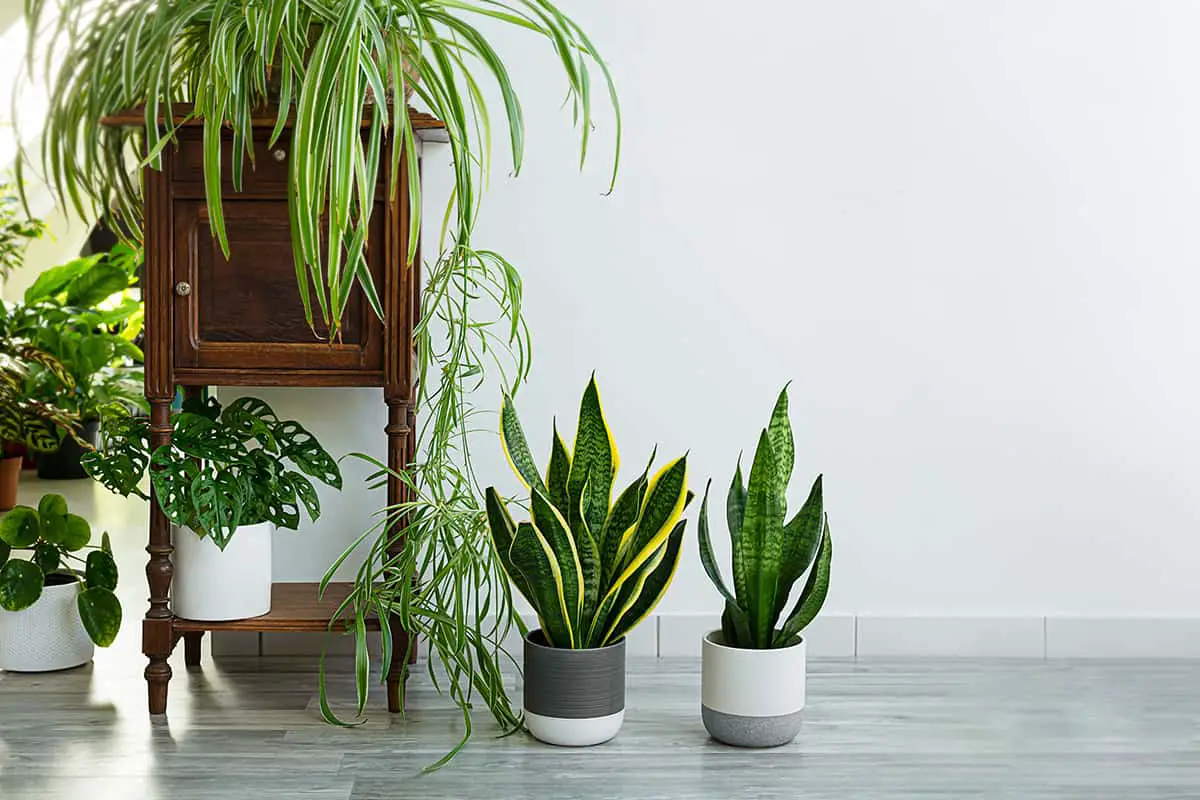Having houseplants can brighten up your living space and improve indoor air quality. However, not all homes have ample sunlight for typical plants to thrive. Fortunately, there are a variety of houseplants that prefer shade or dim conditions rather than direct sunlight, making them perfect for rooms with limited natural light.
Here, we’ll guide you in selecting the right type of plants that don’t need sunlight.
Table of Contents
- Aglaonema (Chinese Evergreen)
- Bromeliads
- Cast Iron Plant
- Dragon Tree
- Heartleaf Philodendron
- Ivy
- Lucky Bamboo
- Maidenhair Fern
- Money Tree
- Monstera
- Parlor Palm
- Peace Lily
- Philodendron (Philodendron)
- Ponytail Palm
- Pothos
- Prayer Plant
- Snake Plant
- Spider Plant
- Staghorn Fern
- Watermelon Peperomia
- Wax Plant
- ZZ Plant
- Bird of Paradise
Aglaonema (Chinese Evergreen)
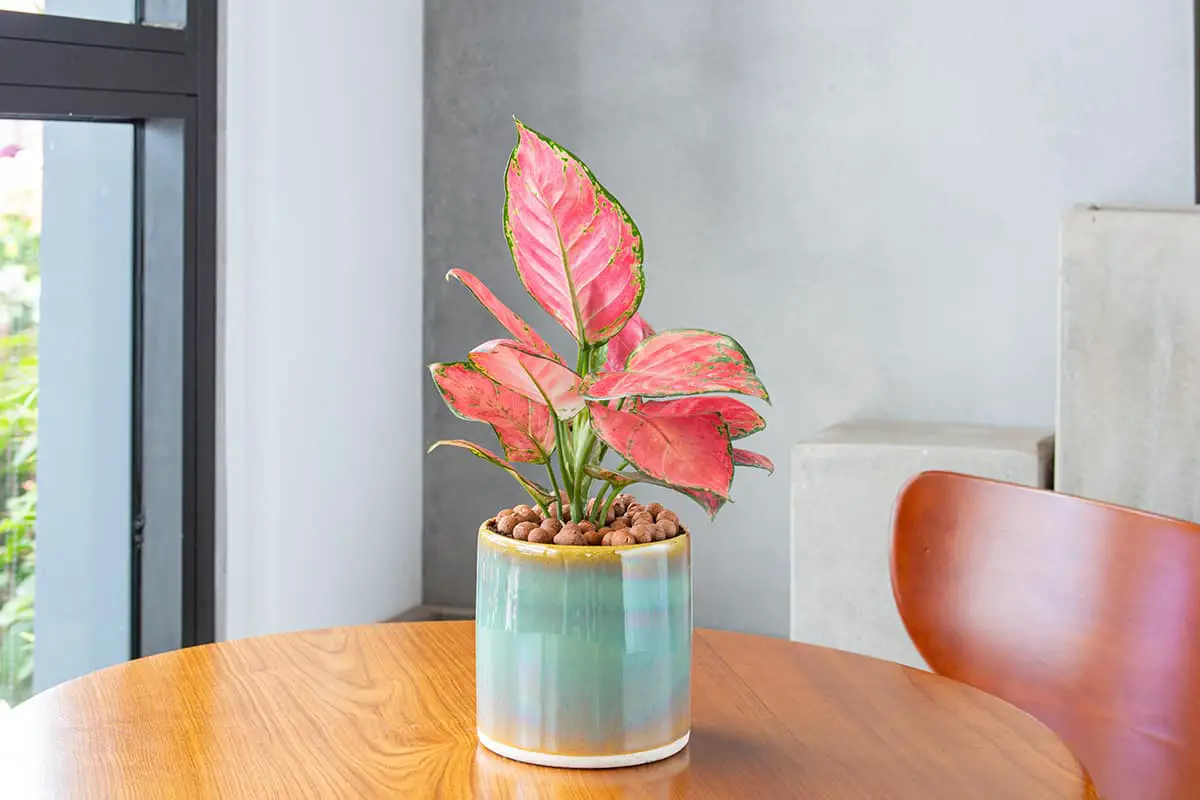
Aglaonema, also known as Chinese Evergreen, is a great choice for low-light spaces. These plants are native to Asia, thriving in moist, shady areas like Thailand, Cambodia, and Malaysia. They come in various leaf colors, making them an attractive addition to your home.
To care for your Aglaonema, keep it away from direct sunlight to avoid burning the delicate leaves. Instead, place it in a spot with indirect light. When it comes to soil, use a well-draining potting mix, as these plants prefer moist but not soggy conditions.
Water your Chinese Evergreen when the top inch of soil feels dry, and maintain a consistent watering schedule. Additionally, maintain indoor temperatures between 60°F and 75°F, as they are sensitive to cold drafts.
In terms of propagation, you can divide or take stem cuttings from your plant. To divide, simply remove the plant from its pot and gently separate a clump of roots to replant. To take a stem cutting, remove a 6-inch segment below a set of leaves and remove lower leaves before planting.
Bromeliads
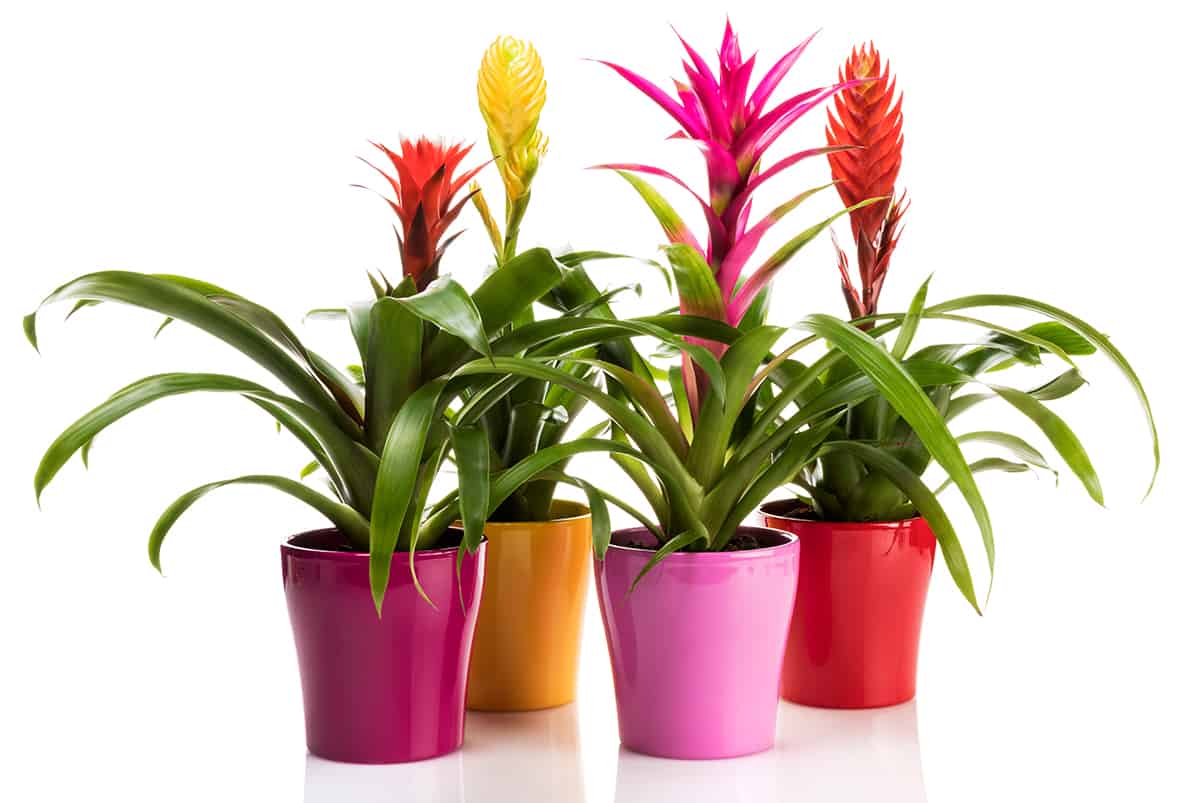
Bromeliads are a versatile and unique group of indoor plants that can grow without sunlight. They come in various shapes, colors, and sizes. Bromeliads are epiphytes, which means they don’t require soil and can cling to trees or other objects.
These fascinating plants can tolerate low light conditions, especially the variants with soft green leaves. However, some types with complex and rigid leaves may struggle in low light. Make sure to choose a bromeliad suited for your specific indoor lighting situation.
To care for your bromeliad, it’s important to water them sparingly. Their natural habitats are tropical forests, so they’re accustomed to high humidity rather than wet soil. Make sure the potting mix is well-draining, and avoid overwatering.
Bromeliads also reproduce quite easily. Once the original plant completes its bloom cycle, you can propagate small offsets called “pups” to grow additional plants. This way, you can create a whole indoor garden of these low-light tolerant, tropical beauties.
Cast Iron Plant
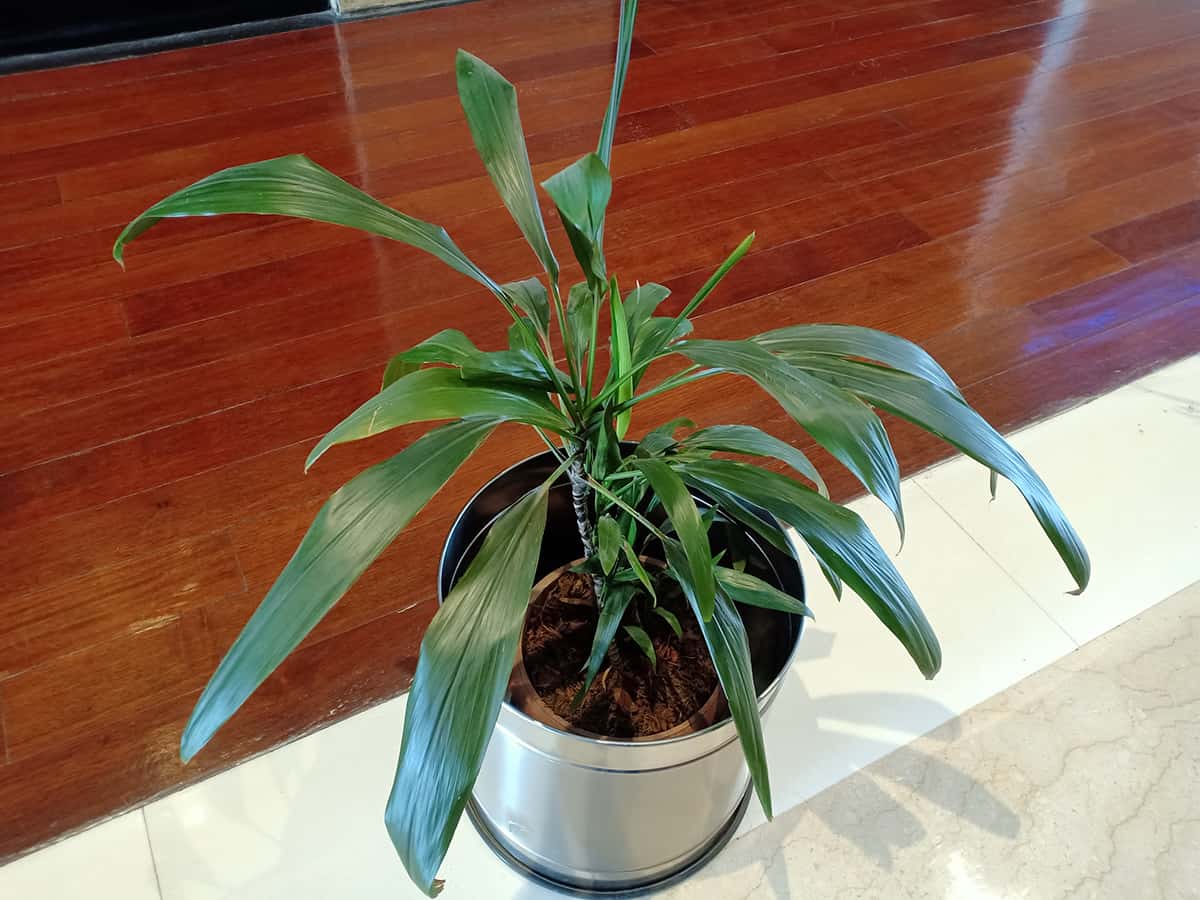
The Cast Iron Plant (Aspidistra elatior) is a great choice for low-light conditions. Aspidistra elatior is known for its hardiness and can withstand a variety of indoor environments. This plant is perfect for those who have limited access to sunlight in their homes or offices.
Its glossy, green leaves are long and wide, providing a lush effect. They can grow up to 2 feet in length. When caring for a Cast Iron Plant, it’s important to maintain moderate to low light conditions. Direct sunlight can cause leaf burn, so it’s best to keep the plant away from large windows or skylights.
In terms of care, the Cast Iron Plant demands moderate to low light, as direct exposure to sunlight may result in leaf burn. It is crucial to position the plant in a way that it is shielded from direct light through large windows or skylights.
To ensure the health and growth of your Cast Iron Plant, it is important to let the soil dry out between waterings, as overwatering might cause root rot. The plant prefers temperatures ranging from 60°F to 70°F (approximately 15°C to 21°C), which is typical of indoor environments.
Furthermore, to support its growth, applying a balanced liquid fertilizer once every two months will supply the necessary nutrients.
Dragon Tree
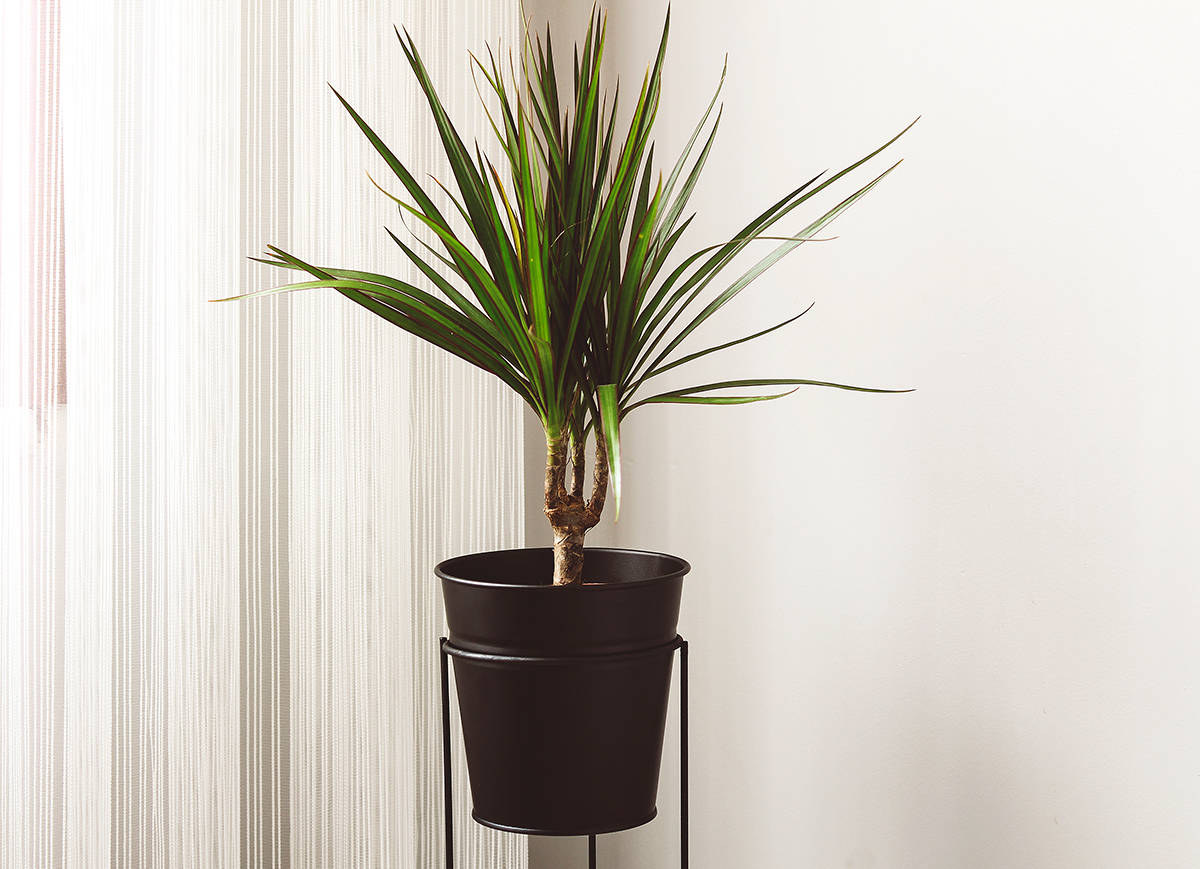
The Dragon Tree (Dracaena marginata) is a low-maintenance indoor plant that can grow without much sunlight. This attractive plant originates from Madagascar, boasting green sword-like leaves with red edges. It is drought-tolerant and considered nearly indestructible, making it an ideal choice for beginners in household gardening.
To care for your Dragon Tree, place it in a spot with minimal light, as it can tolerate low-light conditions. Keep the soil slightly moist, but avoid overwatering to prevent root rot. Dragon Trees also prefer a well-draining soil mix to aid in proper water management.
Heartleaf Philodendron
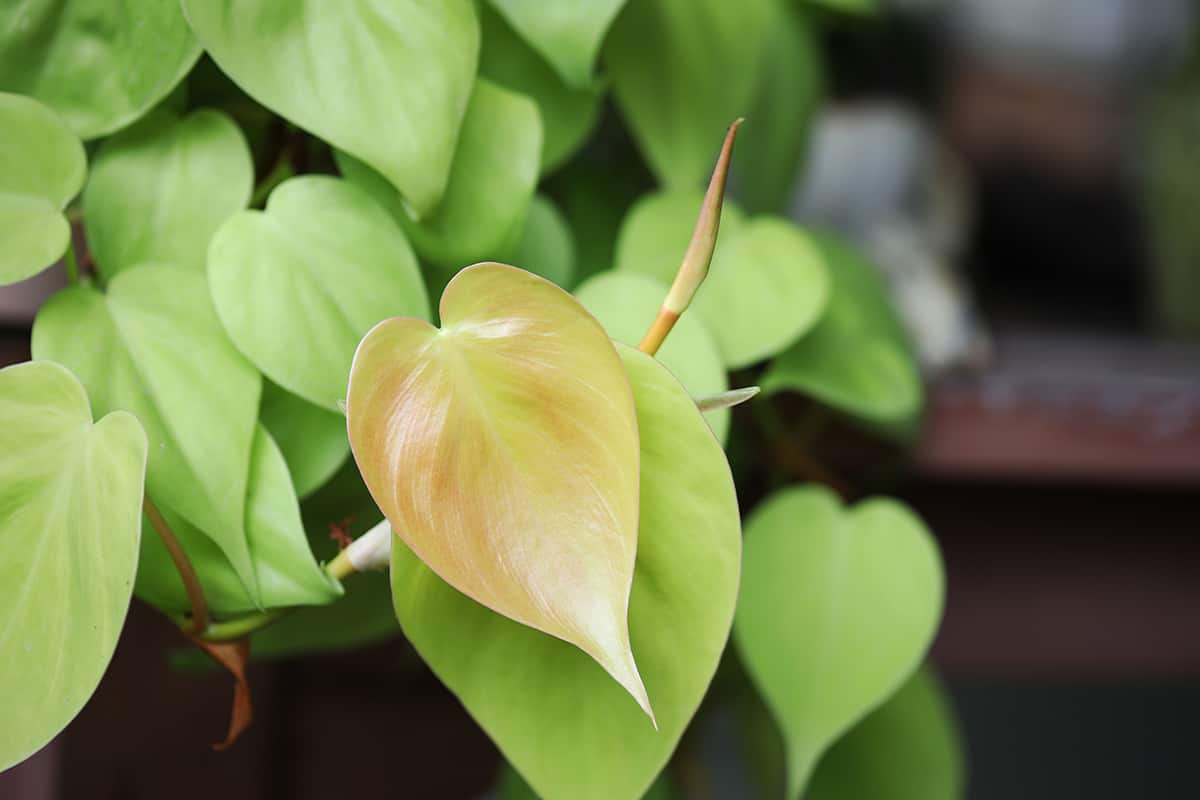
Heartleaf Philodendrons thrive in medium to bright indirect sunlight but can also adapt to low-light conditions. However, ensure that no direct sunlight touches your plant, as it can cause yellowing or scorched leaves.
Growing a Heartleaf Philodendron is quite easy. Fill the pot with your soil mix when repotting, leaving the top 1-2 inches of soil free. Gently tease out any tangled roots and place your plant in its new pot, pressing the soil down gently. Finally, water the plant thoroughly.
Caring for this plant involves monitoring its growth and leaf size. If the leaves grow between two to four inches long, your plant is receiving enough light. Use this information to adjust your indoor location accordingly. By following these guidelines, your Heartleaf Philodendron will thrive and add a touch of greenery to your space.
Ivy
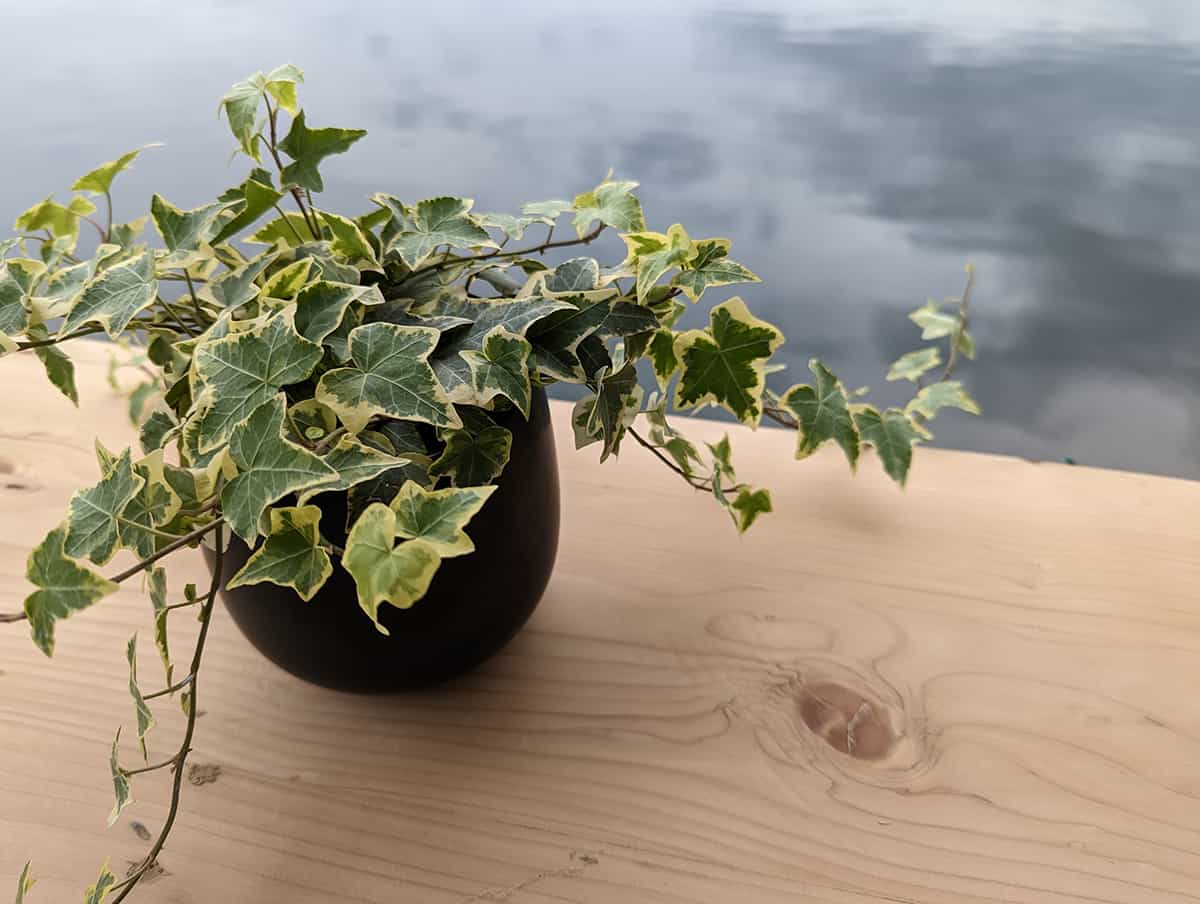
Ivy plants are known for their low maintenance requirements and graceful appearance. Several types of ivy can thrive in low-light conditions, with English Ivy being a popular choice.
To care for your indoor ivy, you should use a well-draining, all-purpose potting mix. Keep the plant in a room with a temperature between 50°F and 70°F. Although ivy does not need direct sunlight, it requires bright light for optimal growth. Artificial light can be used to supplement natural lighting.
You can propagate ivy from cuttings, making it easy to expand your collection. Ivy plants add visual interest and a touch of natural beauty to any room. Consider incorporating ivy into your indoor garden for an elegant and low-light-friendly houseplant option.
Lucky Bamboo
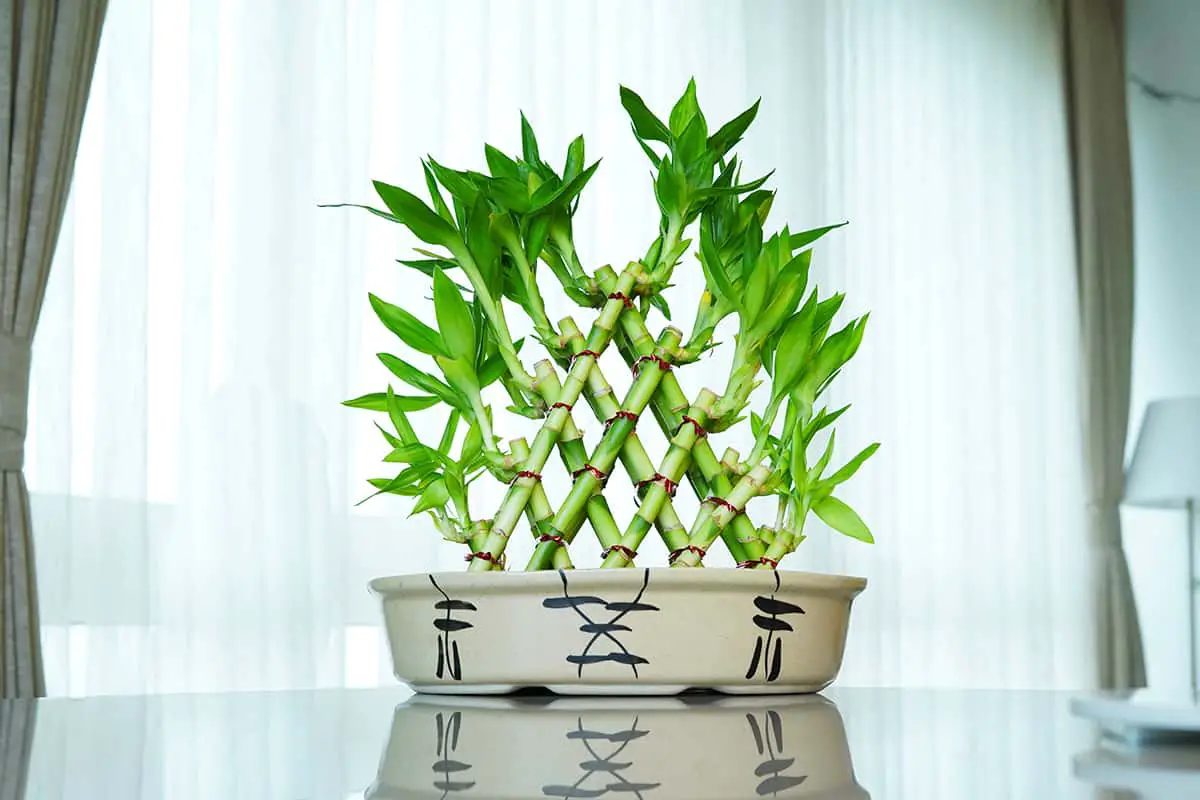
Lucky Bamboo is known for its eye-catching shapes and feng shui appeal. It can be trained to grow in various forms. Not only does this plant provide a touch of elegance, but it also requires minimal sunlight.
To care for your Lucky Bamboo, place it in a location with indirect light. This plant is highly adaptable, making it perfect for dimly lit spaces. Water it with filtered or distilled water, as tap water could harm this sensitive plant.
Maidenhair Fern
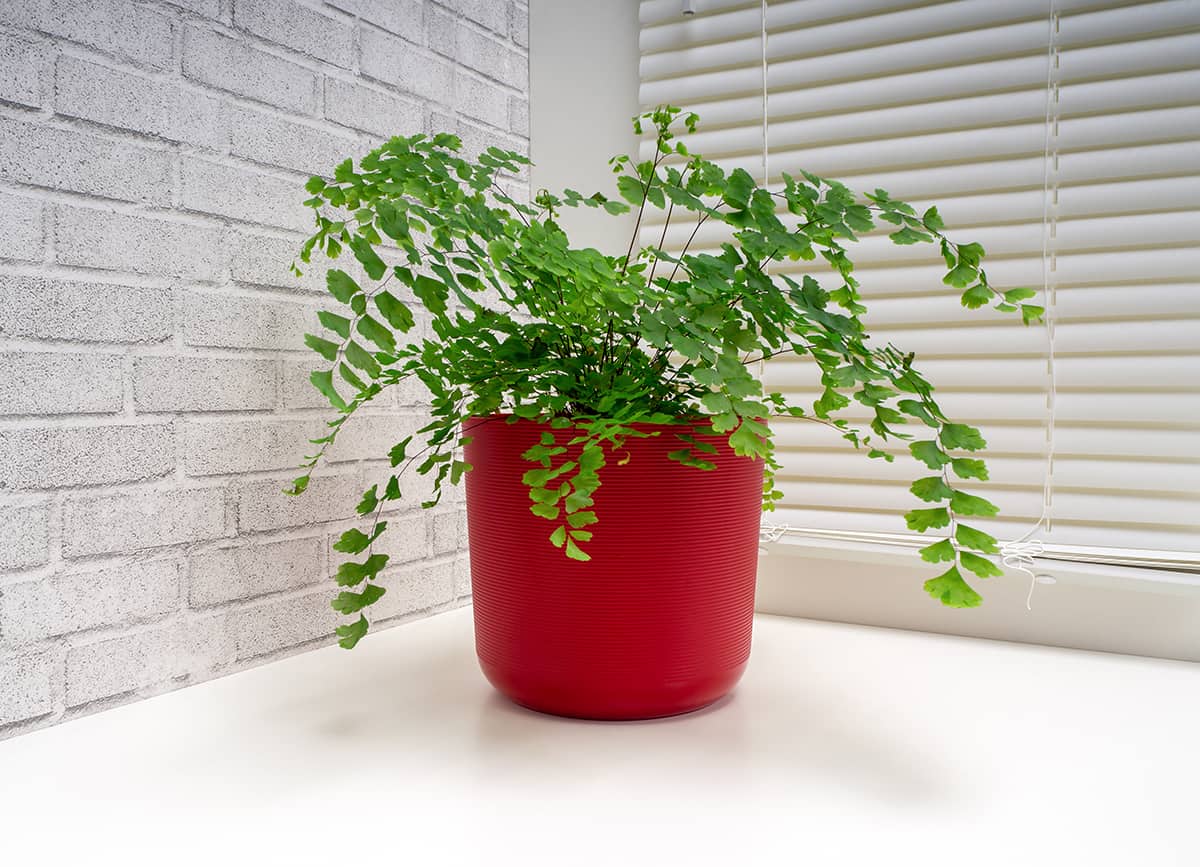
The Maidenhair Fern is a beautiful, elegant plant that brings a touch of sophistication to any space. Known for its dark, glossy leaves, this plant can thrive in low-light conditions.
To care for your Maidenhair Fern, place it in an area with bright, indirect light or dappled light. Make sure the soil remains consistently moist but not soggy by using a well-draining potting mix and watering regularly.
If desired, you can fertilize your fern with balanced houseplant fertilizer once per month. Keep the temperature and humidity within a comfortable range, ideally between 68 to 77 degrees Fahrenheit, to ensure healthy growth.
Money Tree
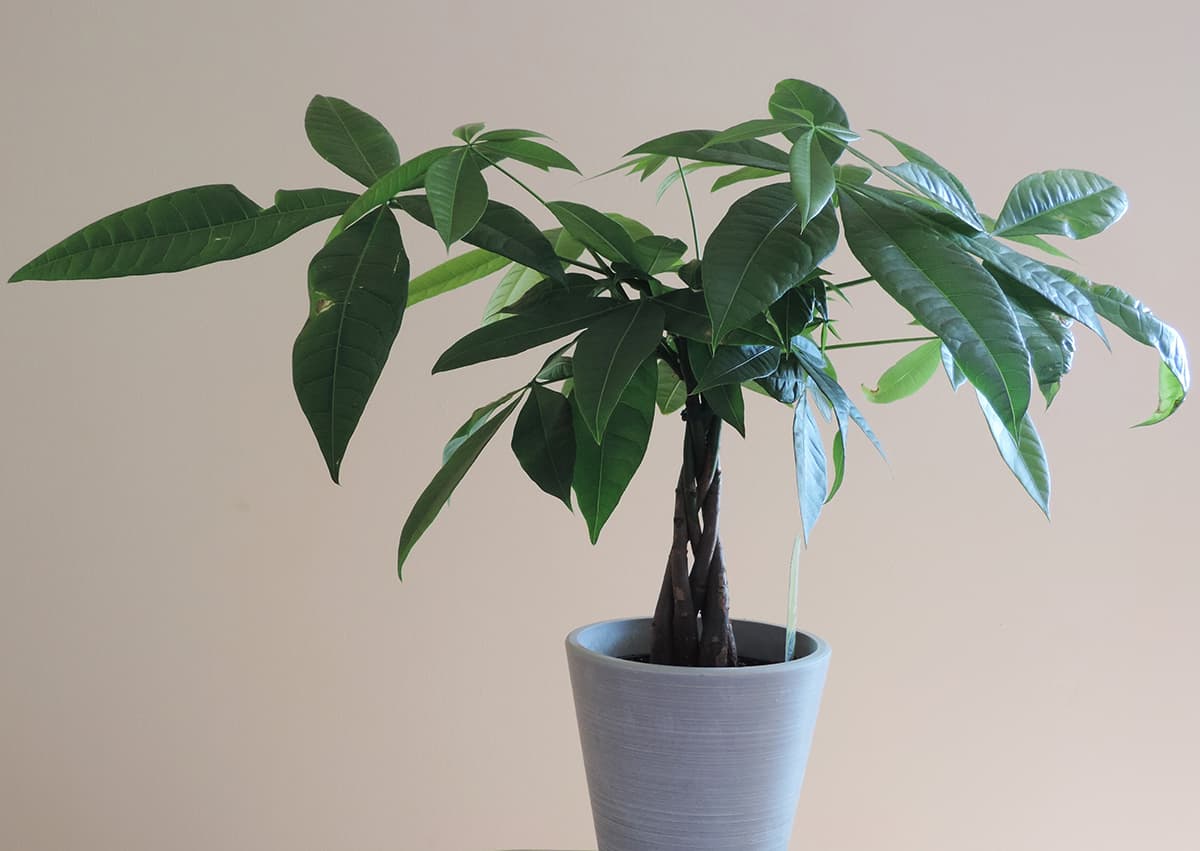
Money tree plants thrive in areas with bright to medium indirect sunlight. You can place it near a window, but make sure it avoids direct sunlight.
Money Trees require regular watering. Water it every one to two weeks until the water runs out the bottom of the pot. Allow the soil to dry slightly between waterings. Overwatering can cause root rot while underwatering might cause leaves to fall.
When it comes to the quick care of a Money Tree, several key points should be noted. The plant thrives under bright to medium indirect sunlight, making it adaptable to various indoor lighting conditions.
Watering should be carried out every one to two weeks or whenever the soil begins to feel slightly dry to the touch.
As for the soil, sticking to a well-draining potting mix that is high in peat moss is essential for the health of the Money Tree. Lastly, always choose a pot that features drainage holes to facilitate proper water management and prevent root rot.
A healthy Money Tree will bring a touch of the tropics to your indoor space.
Monstera
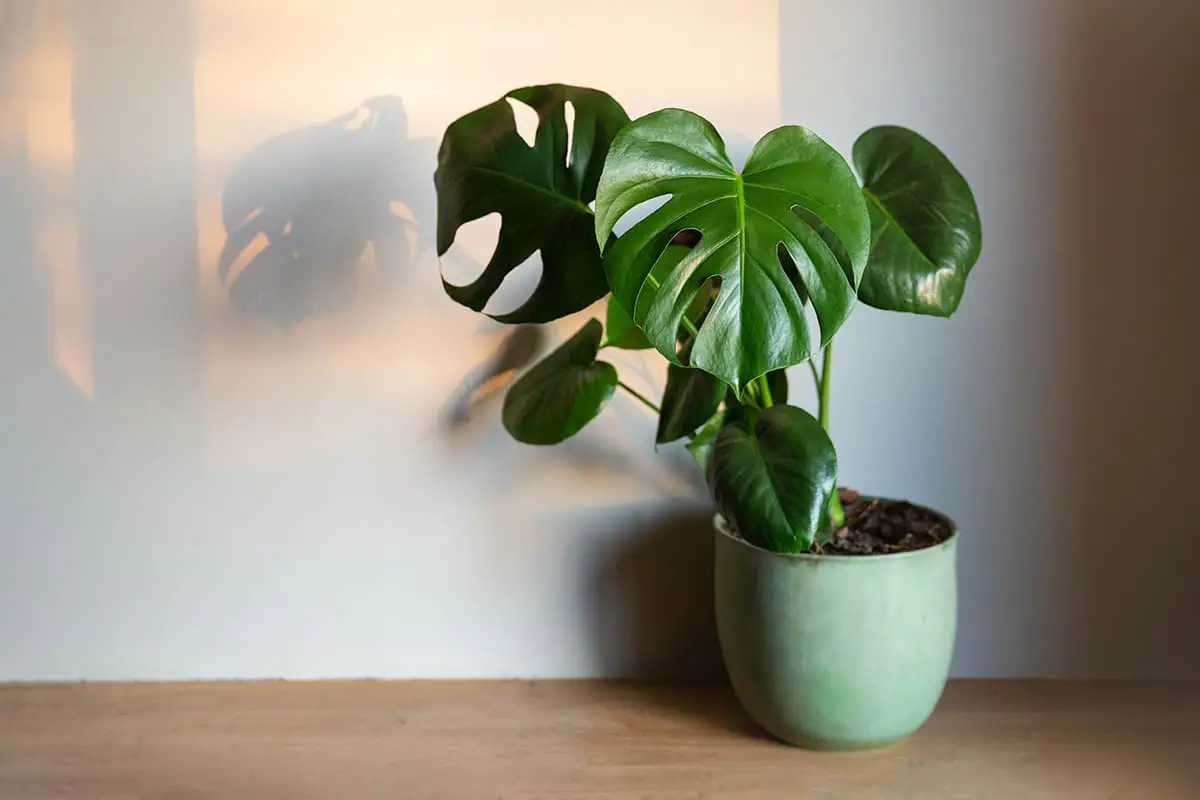
Monstera plants are a trendy choice for modern homes and offices with minimal natural or artificial light. Many species of Monstera can adapt well to indoor environments, to name a few Monstera deliciosa, Monstera adansonii, Monstera siltepecana
Monsteras prefer bright, indirect light, but they can tolerate moderate light levels, making them suitable for rooms with limited sunlight. But for optimal growth, it’s important to provide consistent lighting
To keep your Monstera healthy, water it once the soil becomes slightly dry, and avoid overwatering. Maintain indoor temperatures between 65-85°F (18-29°C) and provide moderate humidity. Prune yellowing or damaged leaves to maintain a clean and attractive appearance.
Parlor Palm
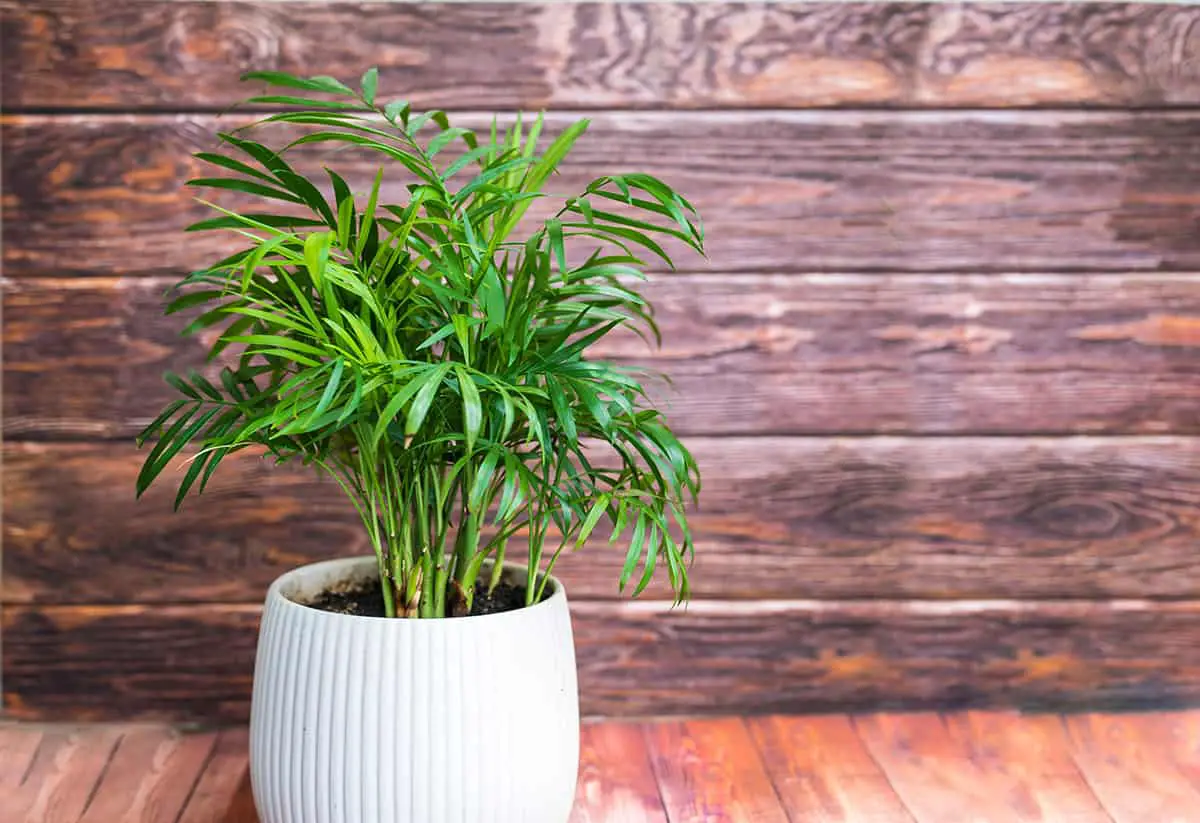
Parlor Palm, also known as Chamaedorea Elegans, thrive in northern or eastern exposure windows as they don’t require direct sunlight. This plant can adapt well to artificial lighting too, making it suitable for rooms lacking adequate natural light.
The plant is slow-growing and compact, making it perfect for small living spaces or as an accent piece for side tables. You can enjoy its aesthetic appeal without worrying about it taking up too much space. Another benefit of having a Parlor Palm is that it helps in air purification.
When it comes to caring for your Parlor Palm, make sure not to overwater it. Maintain a well-draining soil mix and keep the plant near a source of indirect light. Avoid excessively sunny spots like western or southern windows, and remember that Parlor Palms are relatively shallow-rooted, so choose a wider pot rather than a deeper one for repotting.
Peace Lily

Requiring less sunlight than most plants, the Peace Lily can often be found in homes and offices with limited natural light. However, remember that it cannot survive in completely dark areas. With inadequate lighting, the plant’s dark leaves may lose their glossy appearance.
Choosing the right spot for your Peace Lily is essential. A corner with indirect sunlight or a room with bright, diffused light is perfect. Be sure to avoid exposing the plant to direct sun, as this can cause its leaves to become scorched and damaged.
Caring for a Peace Lily includes providing proper hydration and humidity. Your plant will let you know when it’s thirsty by wilting slightly. Avoid overwatering, as this can cause root rot. In addition to maintaining the right watering schedule, you can also increase humidity by placing the pot on a tray filled with pebbles and water.
Philodendron (Philodendron)
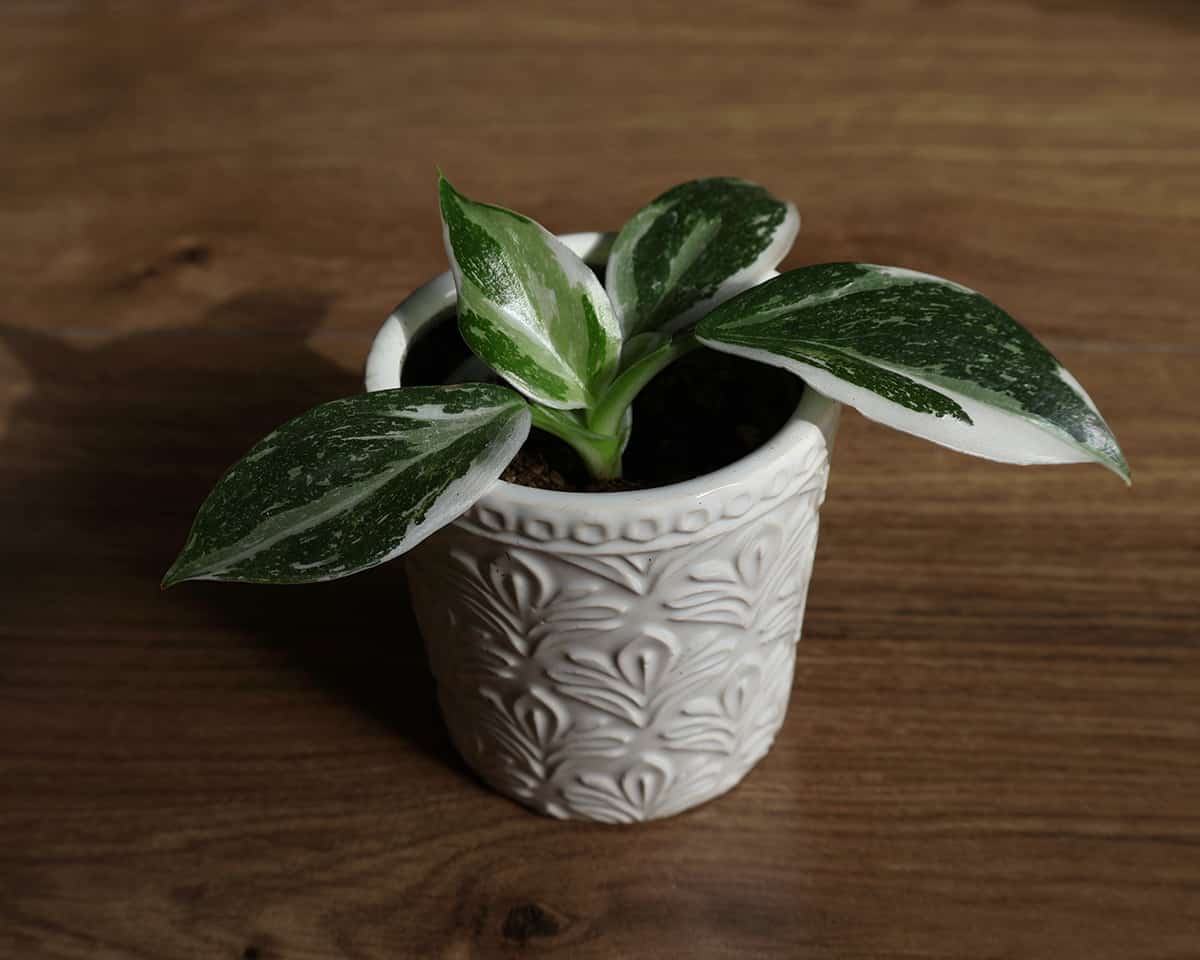
Philodendrons are versatile houseplants that can grow well in an indoor environment without direct sunlight. They prefer bright, indirect light but can still survive in darker areas. To provide proper care, make sure the soil is well-drained and water it whenever the top 1″ (2.5 cm) of soil is dry. Aim to maintain a temperature between 65°F and 80°F (18°C – 27°C) for optimal growth.
These plants thrive in high humidity and can tolerate a range of household temperatures. To increase humidity, you can place the plant on a tray of water and pebbles or mist it occasionally. Keep in mind that Philodendrons are toxic to pets and humans if ingested, so place them out of reach of animals and children.
Ponytail Palm
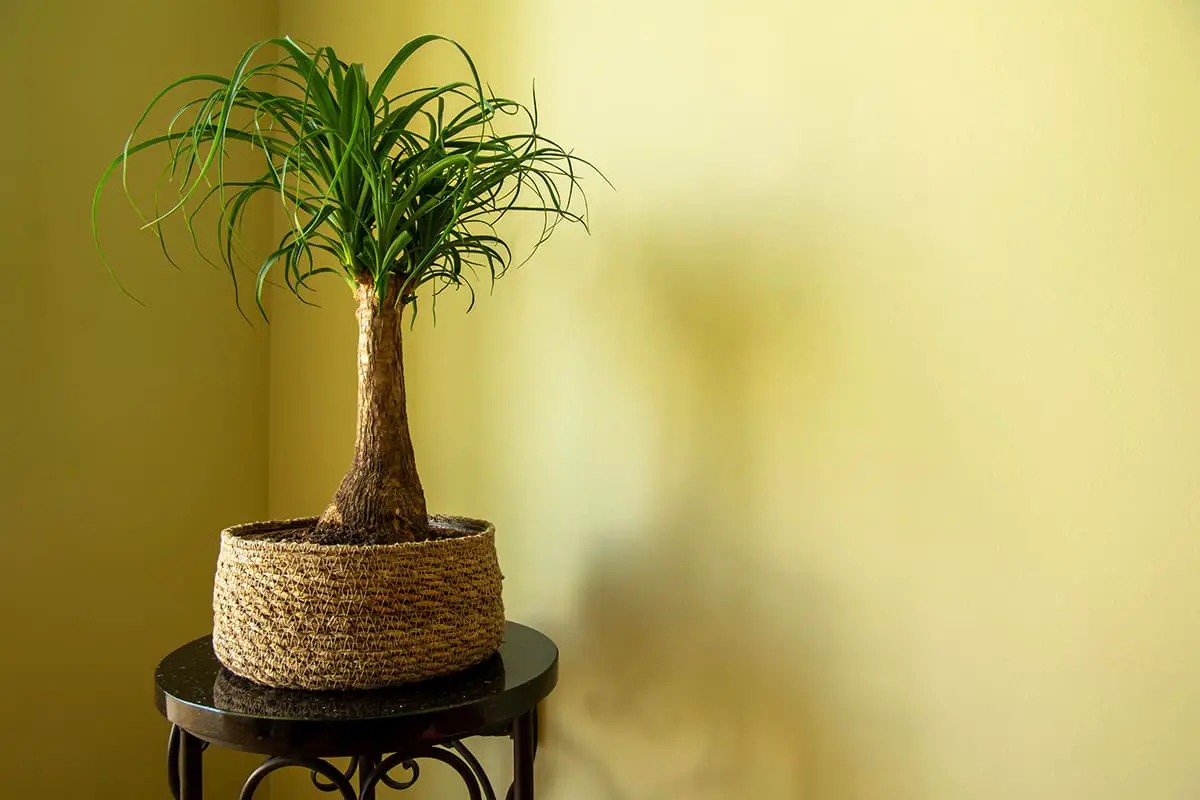
The Ponytail Palm can thrive without direct sunlight, making it suitable for your home or office.
This unique-looking plant gives a tropical vibe, even in minimal lighting conditions. It is a low-maintenance indoor plant that thrives on benign neglect. Just be careful not to overwater it.
To care for your Ponytail Palm, let the soil dry out between waterings. It prefers a well-draining potting mix. This plant is resilient and adapts well to less-than-ideal conditions.
Pothos
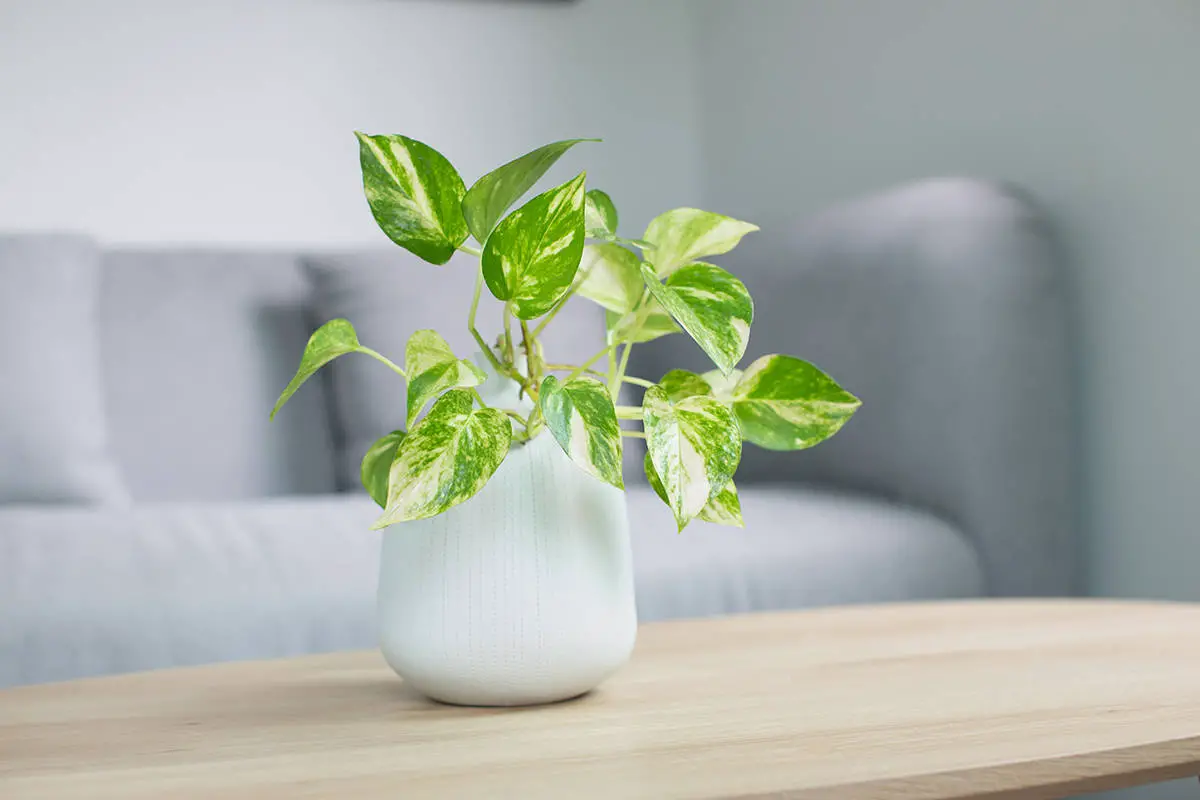
Pothos are native to tropical forests and often grow as epiphytes, which means they benefit from the dappled sunlight filtering through the canopy above them. Pothos plants are known for their impressive ability to adapt to different light conditions, making them an excellent choice for low-light areas.
There are various Pothos varieties that can grow without sunlight. The most common one is the Golden Pothos (Epipremnum aureum). Another variety is the Hawaiian Pothos.
To ensure proper growth in areas without sunlight, you can use artificial lighting. This helps Pothos plants continue to grow without needing direct sunlight. Keep in mind that these plants are incredibly adaptable, so regular adjustments to their environment will ensure their growth and health.
Prayer Plant
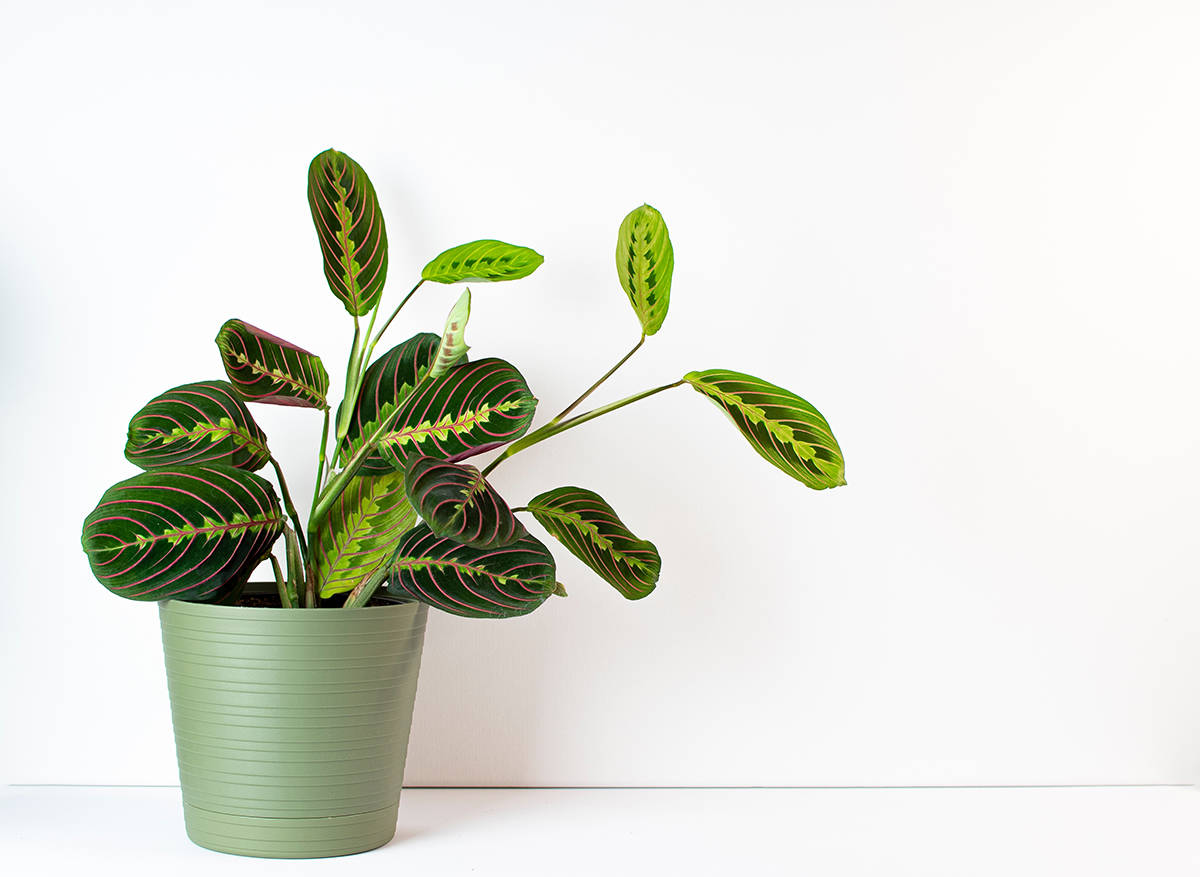
The Prayer Plant is a wonderful addition to your indoor garden. This low-maintenance houseplant is named after Bartolomeo Maranta, an Italian physician and botanist of the 16th century. Native to Brazil, this plant thrives without direct sunlight exposure.
To care for your Prayer Plant, provide it with moderate light. It doesn’t need much sunlight, so it’s perfect for dimly lit areas in your home. Make sure to place it in a spot that receives indirect light, as it doesn’t like too much sun.
When it comes to watering, keep the soil consistently moist. Make sure you don’t let it dry out too much or overwater it. A good way to protect its roots and maintain a healthy plant is by using well-draining soil.
Prayer plants are not only easy to care for but also visually appealing. Their leaves have an interesting pattern and bright colors. At night, the leaves fold up, resembling hands in prayer, hence its name.
Snake Plant

The snake plant (Sansevieria trifasciata) is a popular low-maintenance houseplant that thrives in low-light conditions. Known for its sword-like leaves with yellow edges, the snake plant adds a touch of elegance to any indoor space.
To grow a snake plant, you’ll need to place it in an area with temperatures above 50°F (10°C) and protect it from drafts, especially during winter months. You don’t need to stress about providing natural light, as it can adapt to various lighting conditions, including low light.
When it comes to watering, snake plants require minimal intervention. Allow the soil to dry out between waterings, as over-watering can lead to root rot. Additionally, it’s worth noting that snake plants are efficient in removing indoor air pollutants, contributing to a healthier environment in your home.
Spider Plant

The Spider Plants are adaptable, easy-to-grow houseplants that can thrive even without direct sunlight. They get their name from the plant’s star-shaped flowers that evolve into spider-like green offshoots, or spiderettes. They gracefully dangle from the parent plant’s long, slender green leaves, creating an appealing appearance.
These plants can grow successfully in dark places or in full sun. This versatile plant offers several hues of green, making it a delightful addition to any space. The leaves of the Spider Plant can reach a maximum length of 60 centimeters.
Caring for a Spider Plant is simple. You don’t need to be an expert gardener to maintain its health. Just ensure that the plant’s soil remains moist.
Staghorn Fern
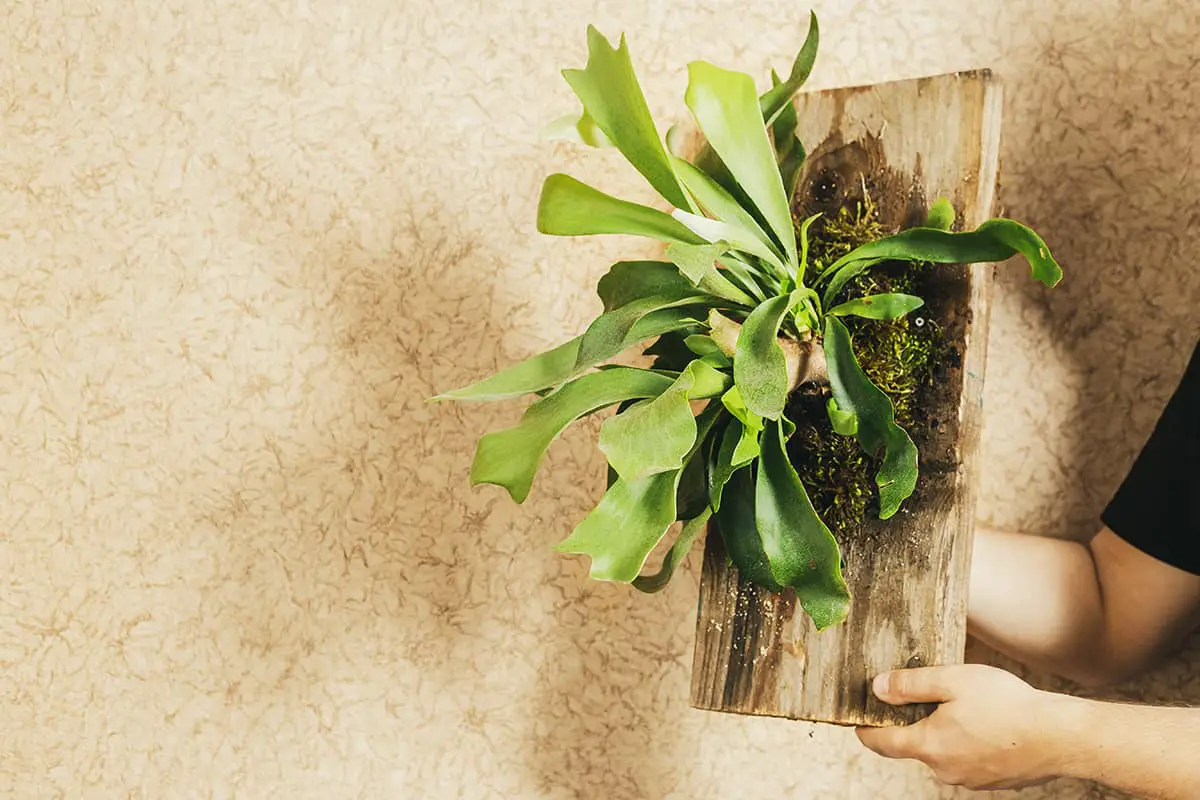
Staghorn ferns (Platycerium spp.) are unique houseplants that you can grow without direct sunlight. Place them in a location with bright, indirect or dappled sunlight for best results.
To ensure proper growth and health, use a well-draining organic medium as the soil. Maintain temperatures between 60 and 80 degrees Fahrenheit and provide high humidity. Remember to water the fern frequently but consistently. It’s important to let the base dry out before watering again.
When it comes to nutrition, a general-purpose liquid fertilizer will suffice.
Watermelon Peperomia
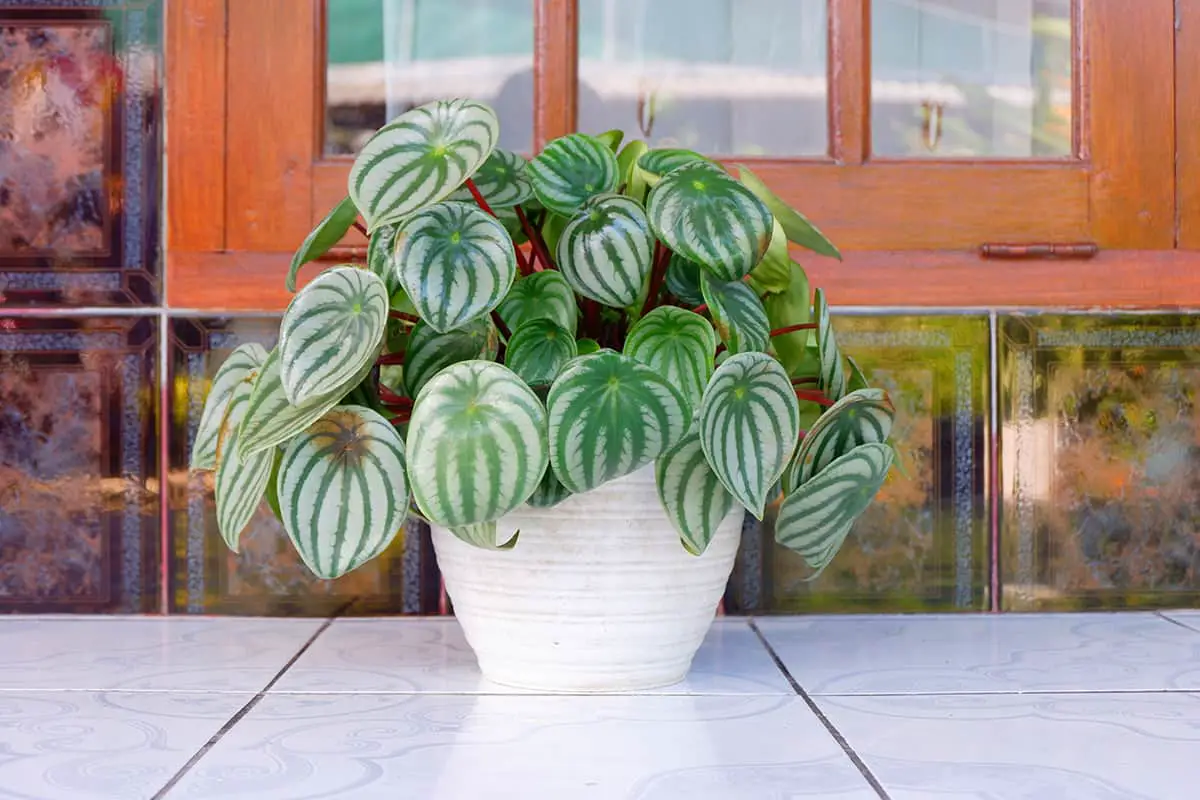
This small, attractive plant is famous for its green and silver striped leaves and red stems. Adapting to medium indirect light, Watermelon Peperomia thrives in rooms without direct sun.
It is important to provide it with bright to medium indirect light; however, if you notice your plant becoming leggy, it might benefit from being moved closer to a window to receive more light.
When it comes to watering, it should be done sparingly. The plant’s thick leaves are adept at storing water, so it’s essential to wait until the soil has completely dried out before watering again.
Regarding humidity, Watermelon Peperomia prefers a range between 40% and 50%. In case the air in your home is too dry, consider occasionally misting your plant or employing a humidifier to maintain the ideal humidity level.
Watermelon Peperomia’s peculiar flowers add a unique charm to its overall appearance.
Wax Plant
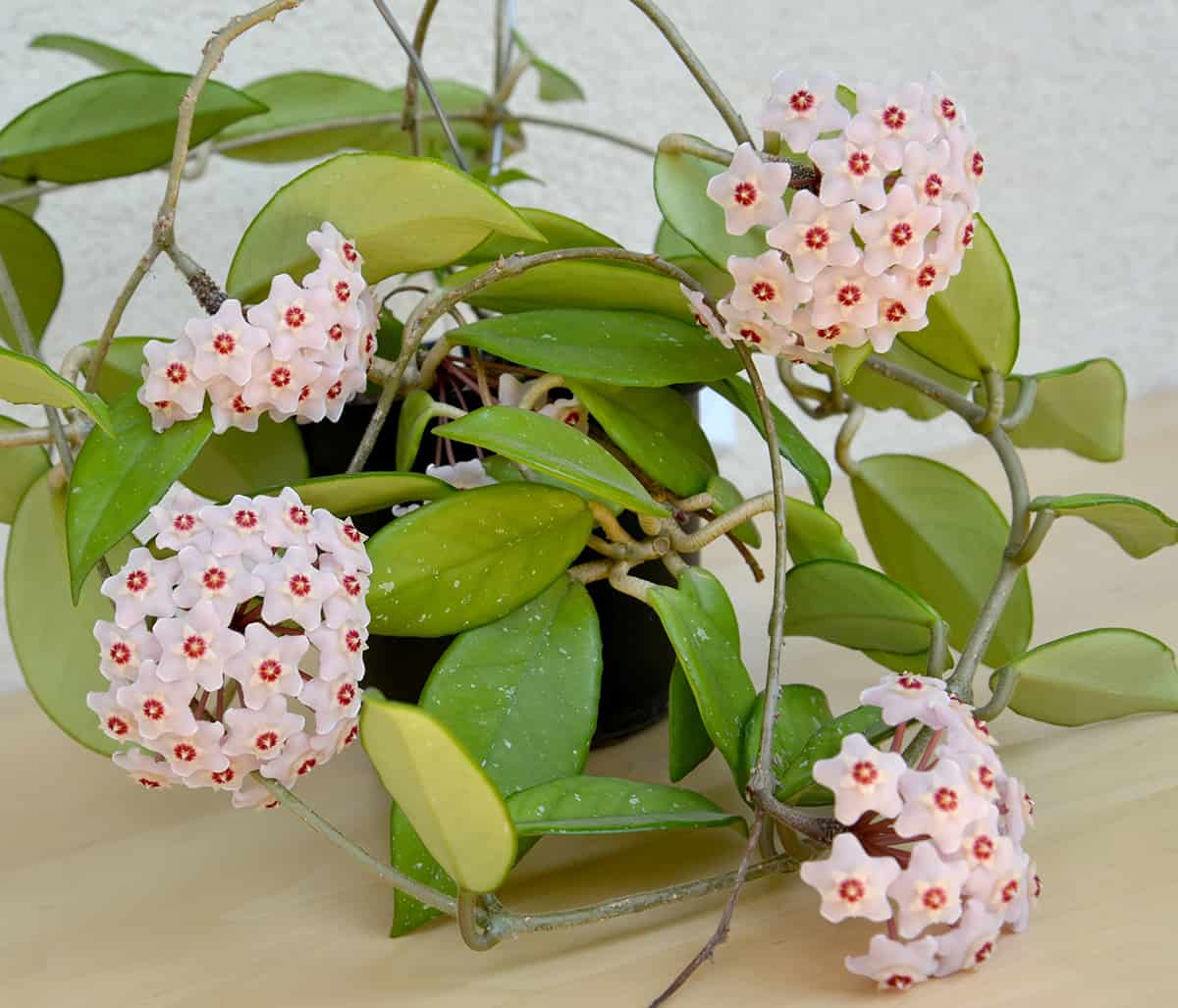
The Wax Plant (Hoya) thrives in low to moderate lighting conditions and is known for its thick, waxy leaves.
The plant’s unique appearance consists of star-shaped flowers and trailing vines, making it an attractive addition to your indoor garden. The flowers also produce a pleasant fragrance, which can fill your space with a sweet aroma.
To care for your Wax Plant, provide well-draining soil in a pot with drainage holes. Water the plant when the top inch of soil feels dry, and avoid over-watering. This will help prevent root rot and maintain the plant’s health.
ZZ Plant
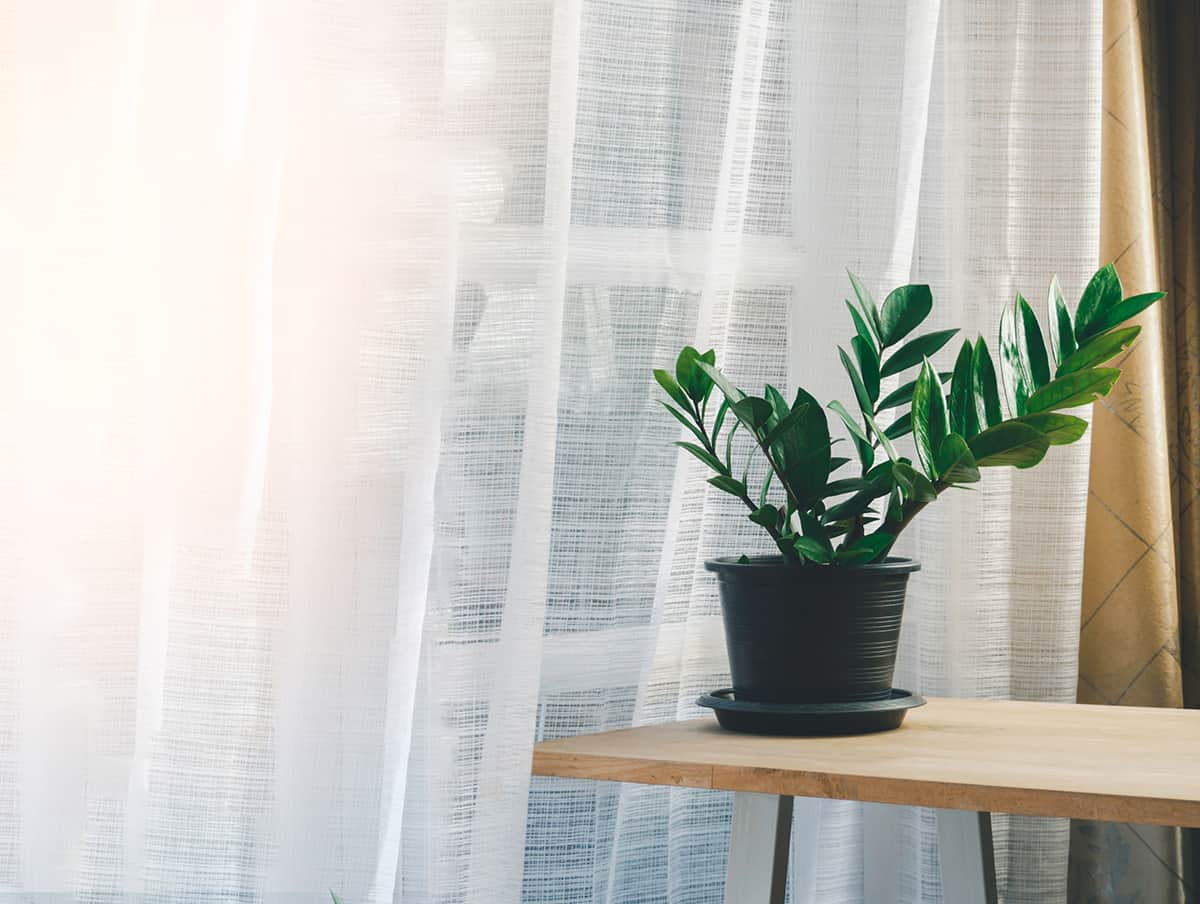
The glossy, waxy leaves of the ZZ plant let it flourish in areas with minimal sunlight as they reflect what little light is available. This resilient plant is native to Africa and is adaptable to various indoor environments.
One of the benefits of the ZZ Plant is that it can thrive in many lighting conditions, even if it prefers bright, indirect sunlight. When taking care of a ZZ Plant, it’s essential to note that it’s toxic to humans and animals if ingested. So, keep it away from children and pets.
For optimal growth, you should repot your ZZ Plant during its active growth phase, which is usually in the spring or summer. This low-maintenance plant doesn’t require daily attention; periodic watering is enough to keep it happy.
Bird of Paradise
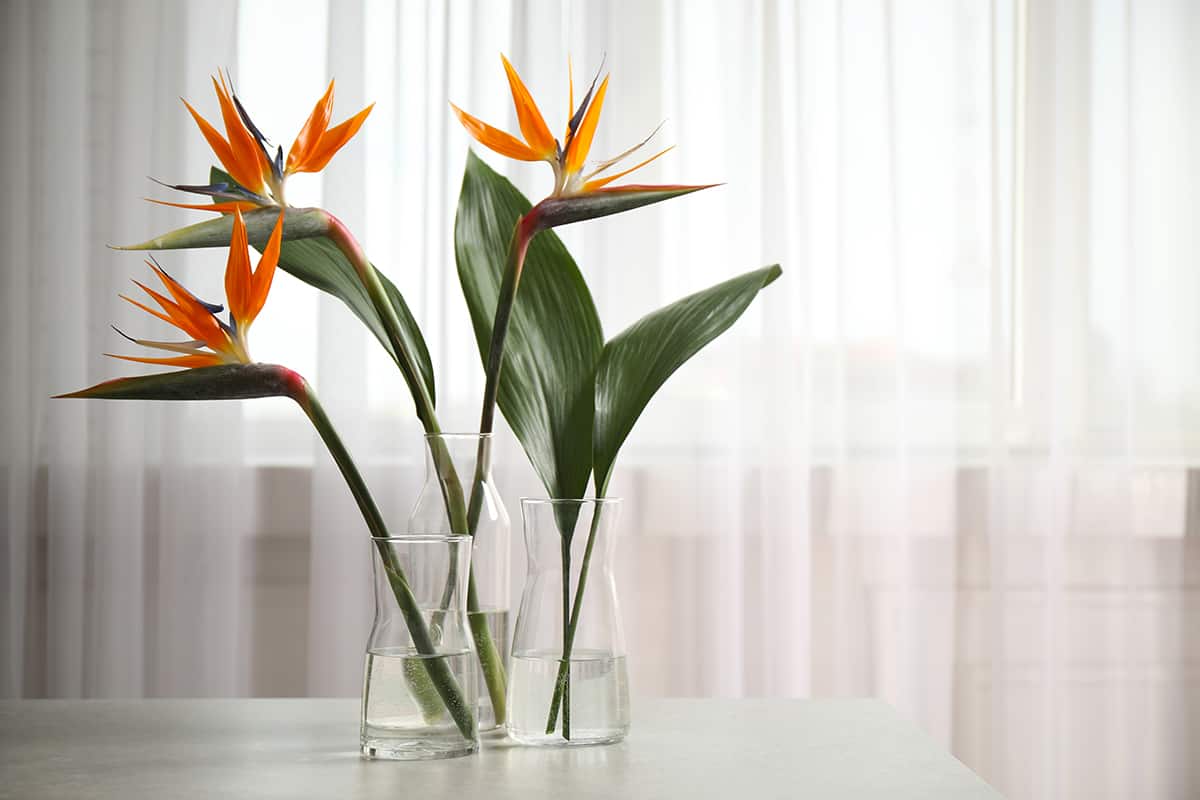
The Bird of Paradise, a popular tropical houseplant, may withstand low light conditions. However, you must keep in mind that it thrives in bright, direct sunlight for at least six hours a day. If you cannot provide the required light, it may survive but likely will not bloom.
To grow a Bird of Paradise indoors, choose the common species, Strelitzia reginae, which grows up to six feet tall. Ensure your plant has a pot at least 12 inches wide and deep. Remember, this larger pot will accommodate the ever-growing indoor Bird of Paradise.
The plant does need a consistent balance of sunlight and water to maintain its health. So, do not forget to keep the soil moist but not soaked. Regularly check, as your plant will appreciate your attention to the right balance of resources.
